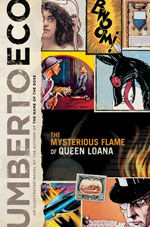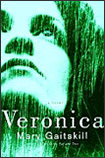I just came across a peculiar dictionary, the Hobson-Jobson: A Glossary of Colloquial Anglo-Indian Words and Phrases, and of Kindred Terms, Etymological, Historical, Geographical and Discursive. It is a dictionary of words of Indian (and other) origin that would have been used by the English in India. It is a dictionary of the Raj and traderoutes that is full of surprises. It is a work of its time, published just at the end of the 19th century. The title, “Hobson-Johnson” is an example of the colloquial terms covered:
HOBSON-JOBSON , s. A native festal excitement; a tamƒÅsha (see TUMASHA); but especially the Moharram ceremonies. This phrase may be taken as a typical one of the most highly assimilated class of Anglo-Indian argot, and we have ventured to borrow from it a concise alternative title for this Glossary. It is peculiar to the British soldier and his surroundings, with whom it probably originated, and with whom it is by no means obsolete, as we once supposed. My friend Major John Trotter tells me that he has repeatedly heard it used by British soldiers in the Punjab; and has heard it also from a regimental Moonshee. It is in fact an Anglo-Saxon version of the wailings of the Mahommedans as they beat their breasts in the procession of the Moharram — “YƒÅ Hasan! YƒÅ Hosain!’
Alas they don’t have the word “dylok” – supposed to be an Indian-East-African version of “dialogue” – used for variety shows and drama.
Update: I just discovered that this is “back-ended” by The ARTFL Project.
 What if you only remembered what you had read? In Umberto Eco’s latest novel, The Mysterious Flame of Queen Loanna, the narrator Bodoni wakes from a stroke with no memories other than the cultural ones – what he, an antiquarian book collector, has read. The first two parts of this novel dramatize the personal (and its loss) in memory. What if memory were only a hypertext of associations like Bodoni’s memories? What makes a memory meaningful? What gives it the “mysterious flame” of immortality?
What if you only remembered what you had read? In Umberto Eco’s latest novel, The Mysterious Flame of Queen Loanna, the narrator Bodoni wakes from a stroke with no memories other than the cultural ones – what he, an antiquarian book collector, has read. The first two parts of this novel dramatize the personal (and its loss) in memory. What if memory were only a hypertext of associations like Bodoni’s memories? What makes a memory meaningful? What gives it the “mysterious flame” of immortality? Joanne, my hard cover muse, lends me books that win prizes (or almost win.)
Joanne, my hard cover muse, lends me books that win prizes (or almost win.) 